We reached another milestone this week, one that I feel like pointing out. When I first started this Newsletter several months ago, I got a sense from talking to people who had been doing similar things as to what sort of a circulation I could expect to attract. In doing so, I set myself a target of 1600 followers—something that we achieved a few months back. But now we’ve passed a different milestone, which is to say that we’re now reaching in excess of 2500 readers every week. So accordingly, I want to point out and commemorate our 2500th subscriber. And that would be marypbutler99@gmail.com. So take a bow, Mary, and thanks for taking this ride with us!
Got lots of good questions this week, including a few that have been hanging around for a little bit as they were sent to me through other channels rather than in comments on prior releases. But before we dive into all of them, we need to begin with some additional clarifying information from Jess Nevins concerning that Captain America original artwork and story that we talked about a week back. Jess is an expert on the history of heroic fantasy, so he knows what he’s talking about.
I must admit to slight disappointment in your comments on Fang in Captain American Comics #6. Cover date September 1941, published 6-25-41, so well before Pearl Harbor, and at a time when the Japanese were being portrayed as monsters but the Chinese were generally portrayed in comics as heroic victims of the Japanese. The story itself is about two Chinese gvt emissaries coming to the US to get loans from the American gvt. Yet the scriptwriters, who I see were Simon & Kirby, make Fang into both a Japanese monster and a Chinese tool of the Japanese gvt, undercutting the generally pro-China position of most comics. Sure, Fang is in mode of the Yellow Peril pulp villains, but he's got an unusual (to say the least) political symbolism.
Appreciate the correction and clarification here, Jess!
Now, on to questions. Here’s one to start from Ryan M:
I'd love to hear your thoughts about the Ultimate Universe as an editor at Marvel at the time and how the success of that line bled into regular Marvel continuity. I may be wrong about this but from passing comments in the past it seems you were not a fan, but like I said I could be wrong.
The Ultimate Universe was my gateway into comics and holds a dear place in my heart, Bendis' Spidey run specifically is deeply important to me. This true "fresh start" was a great way for me to enter into the world of comics and understand monthly comic books and ongoing continuity, to learn about comic creators and find their stories elsewhere whether at Marvel or not.
Well, as somebody who had spent a lot of time helping to maintain the existing Marvel Universe, I was always a bit defensive about the notion that it was too complicated or needed either replacing or overhauling. But more than anything, most of any problems I had with the Ultimate Universe stemmed less from the work being done and more from the absolutely unfair playing field that I was facing as an editor. The Ultimate Universe was Bill Jemas’ baby, and as such it got all of the best talent, better resources in terms of production values and better promotion—as I recall things, at the time of its launch, ULTIMATE SPIDER-MAN was the cover to our Previews catalog for six months in a row, only being knocked from that front spot by the launch of ULTIMATE X-MEN. Whereas the main MU books, at least for a time there, were treated both as second class citizens as well as workhorses that would work overtime to offset and help to underwrite the titles that management considered more important. All that said, while I didn’t love every single storytelling choice, the Ultimate line was well done for a good long while, and whether it had greater access to creative talent than the regular books, it also made good use of that talent. So the work, for the most part, was good stuff.
And now one from Y. Lu:
A question: The convention of the superhero going "on patrol" is something that seems to have mostly fallen by the wayside. Spider-Man seems one of the few characters it's still associated with, which is ironic because you've said in the past that him going on patrol always feels off to you. I've always wondered, why do you feel it doesn't suit the character?
To me, “going on patrol” implies something that somebody pursues as a job. Police officers go on patrol. And being Spider-Man isn’t Peter Parker’s job. It’s a facet of his life, that he’s driven to use his powers to help people and save lives, but it’s not one that he pursues as a vocation. So when there isn’t an immediate Spidey crisis, he would typically be working on his studies at whatever level he was at at that particular moment, or hanging out with his supporting cast or whomever he was dating at that time. Or he was trying to hustle up some money by taking pictures for the Daily Bugle—which was often the reason he’d go out on what amounted to patrol in the classic days. But he wasn’t simply swinging around looking for a fight, he was trying to come up with the rent or payment for Aunt May’s new meds, or the scratch to take Gwen or MJ or whomever out to dinner. And the fact that he possessed a spider-sense that would go off whenever he was in the vicinity of a dangerous situation made that a whole lot easier to accomplish in terms of finding adventures to get into. (That classic set-up that Stan and Ditko evolved for Spider-Man’s activities is really one of the best and most holistic ones in the history of comics.) Batman and Robin would go “on patrol” in Gotham on most nights, but that was because being Batman and Robin was pretty much their jobs. Sure, Dick Grayson still had to go to school, but we can imagine that millionaire Bruce Wayne slept in most days. That wasn’t a luxury that Peter Parker could afford.
Clive Reston asks:
X-Men #137 is probably the best-known case of an eleventh-hour change to a comic that radically improved it, but are there more recent interesting examples?
I don’t tend to think that last-minute changes to a storyline are ever truly good for it, for all that the alterations made to the “Dark Phoenix Saga” really were the cherry on top that turned that storyline into a classic (not that that kept anybody from bringing Jean Grey back five years later and rendering that story a bit blunted.) So I’m sure that there might be another more recent example of what you’re talking about, but I honestly can’t think of one sitting here. I feel like those sorts of whiplash alterations ought to be avoided as much as possible.
David Baroldy wonders:
A couple behind-the-scenes questions for you, Tom. You’ve talked about sentence case lettering in the past, and I’m wondering if you can shed some light on how the decision was made to go that way on the new FF relaunch. Was this the creative team’s idea or something that you wanted to do as the editor?
Second, can you talk a little about what goes into deciding on a cover artist for a series? It seems like it’s become far more rare at Marvel to see the same artist handling covers and interiors? Why is that?
The use of the upper/lower case style on the new FANTASTIC FOUR launch simply came down to Ryan North requesting it and me acquiescing to his request. (That didn’t stop the book from initially getting lettered in all caps, though, as the instruction to the letterer was overlooked when he began working on the issue initially, requiring him to modify the entire issue later on. oops.)
And there are a number of reasons why you might not want to use the same artist on the cover of your book as is doing the insides. For one thing, it’s another page to get done, and typically a page that takes a fair bit longer than the average one. So with schedules already being tight for most regular pencilers, it’s an added bit of strain that might be avoided. By that same token, there are some artists for whom covers aren’t a particular strength, and others who excel at covers almost to the point where you wouldn’t want to waste them doing interiors. So in those cases, you want the best person that you can get on the cover, since the cover is essentially the primary advertising for that issue, both in the solicitation catalog and once the book is sitting on the store shelves. Philosophically, I tend to like it when the cover artist and the interior artist are the same person, but I also will use dedicated artists on the covers for these and other reasons depending on the situation. When we were looking for a new AVENGERS cover artist a year or so back once Ed McGuinness became unavailable due to his AMAZING SPIDER-MAN work, it was Jason Aaron, I believe, who suggested that we simply have Javier Garron, who’d been drawing the series, do them—and I had to whack myself in the head for not thinking of that, as I’d gotten used to somebody other than Javier taking care of the covers. His coves on the series have been really good, so I’m glad we looped him into that role as well.
Nacho Teso wants to know:
What are your thoughts on annual issues in the current comic-book business? From my reader perspective, I always feel that they were far more important in the past than they are now. I never feel like I actually have to read the annuals or that they are important to whatever else is going on in any given series.
Back in the day, Annuals used to be a way for publishers to put out additional product during the strongest buying seasons, and so generate a bit more revenue for themselves. These days, they don’t really serve that same purpose, but they’re still around, if for no other reason than that readers and Retailers alike are familiar with the term and what it implies—you could just call any of those Annuals a Special or something similar if you were of a mind to, but making it an Annual somehow intangibly ties the content to the home series more tightly. But the importance of an Annual really comes down to just how it’s used in the run of the series, and what importance you give it. When we were working on NEW AVENGERS, Brian Michael Bendis and I used to work extra-hard to make sure that the Annuals mattered and were important to the series. But that isn’t always possible in every instance, again because of the human limitations of the people doing the work.
Next up, a whole bunch of questions from Marvel By The Month podcast’s Bryan Stratton:
I just picked up the Miracleman Omnibus, this week — which I think is the fourth time I've bought these stories — and it got my wheels turning on a few questions that might make for good newsletter fodder, if you're looking for some of that:
1. This might be a question you can't answer yet, but: you mentioned in a recent newsletter that Miracleman's premise is an interesting one to explore in a single series or storyline, but it's not exactly the sort of thing that works and plays well in a larger continuity. And yet it seems like Marvel is gearing up to have some sort of integration of Miracleman into the Marvel Universe. Where do you see the risks and rewards when it comes to bringing such a transformative character into a world that — at least theoretically! — is a single 60+ year story from hundreds of creators over thousands of issues?
2. DC took a lot of heat for making new comics featuring the Watchmen characters without the original creators, after decades of promising that they wouldn't do exactly that thing. Of course, they were entirely within their rights to do so, and I'm sure they sold respectably, or they wouldn't have gone back to that well. What's your take on what DC did right and wrong vis-a-vis Before Watchmen, Doomsday Clock, etc. And how is this informing Marvel's/your approach to Miracleman, another seminal '80s series from The Original Writer that exists in its own world?
3. As we're on the cusp of Miracleman joining the Marvel Universe in some capacity, what do you think are some of the best and worst examples of bringing another company's characters to a new publisher? I feel like the Justice Society's formation in the 1940s is probably the best-case scenario, with Guy-Who-Says-Shazam! feeling like a missed opportunity in the '70s (though there are certainly worse examples).
Taking them by number:
We’ll have to wait and see what the story is at any point where we decide to intermingle Miracleman with the mainstream Marvel Universe, but at first blush, I think it would be not so different from putting the WATCHMEN characters into the DC Universe. Which is to say, I think it made them less special. The thing that makes MIRACLEMAN noteworthy, which was also true for WATCHMEN, was that its world was consistent. That very structure was necessary for the conceit of both series: how the arrival of a super-powered individual would permanently distort the fabric of human society. While I suppose there’s some fannish pleasure to be had in seeing Doctor Manhattan trade barbs with Superman or for Batman to face off against Rorschach, the fact is that, in the DC Universe, those characters just become another set of masks and tights in a veritable sea of them. Likewise, in the Marvel Universe, Miracleman would just be another Sentry, another Blue Marvel, another Hyperion—a guy who could go toe-to-toe with Thor but who wasn’t intrinsically any more interesting in that context than that. What makes MIRACLEMAN interesting is that it isn’t a super hero story at all, not really. It’s a science fiction story, with all of its otherworldly changes being traceable back to a single event: the cashing of a Qys spaceship in the late 1940s. Pretty much all of the super-powered stuff in the series (apart from the assorted aliens, and ultimately it was their ship in the first place) comes from that on inciting incident. As soon as you throw some other element into that pool, the verisimilitude of the world is completely changed, and it just becomes another in an infinite series of parallel worlds, another Earth-22 or whatever. So I don’t really have any issue with, for example, doing a series of fun cover images showing Miracleman interacting with the Marvel heroes, but having him show up for a crossover would work as well for me as TOTAL ECLIPSE did back in the day —a stylistic disaster better off avoided. Doesn’t mean that there’s no way to do it at all, but it does mean that it would require a lot of brainpower and deliberation.
Back when BEFORE WATCHMEN was announced and people were arguing the relative merits of it, I put forward my thoughts—and they really haven’t changed all that much since then. To wit: I personally don’t think there’s a whole lot of need for any WATCHMEN prequels (and the eventual comics did little to persuade me otherwise; I really only thought that Darwyn Cooke’s MINUTEMEN was really worth the effort) but if Marvel had owned WATCHMEN, those characters would have been revived and folded into the Marvel Universe decades earlier, because they represent strong raw materials with a built-in audience. Plus, so long as doing so feels transgressive, readers are going to show up to see the car crash (even if they wind up liking it once they experience it.) So I kind of think that it was inevitable, in the same way that it’s likely similarly inevitable that we’ll see Miracleman hanging around with the Avengers one of these days in some manner. So DC wasn’t intrinsically wrong to do what they did, the only real quantifier was in how good the eventual comic books were. So if you liked BEFORE WATCHMEN and DOOMSDAY CLOCK, then it was worth doing, and if you don’t, then it wasn’t.
I think that most of the best and worst versions of that sort of character integration can be found within the DC umbrella, simply because over the years they’ve done so much more of that than anybody else. Heck, what we think of today as DC was actually two separate companies with some owners in common that were merged in 1947—before that, Wonder Woman, the Flash and Green Lantern were published by different guys that Superman, Batman and Robin. So to me, for example, I don’t think that the Charlton characters have been all that well served by their time as part of the DCU—but that’s entirely down to me having encountered them before that era. If they hadn’t been absorbed into DC, few people would remember them at all. The same is true of the assorted Quality characters, and even the bigger guns of the 1940s such as Blackhawk, Plastic Man and Captain Marvel would largely be things of the past with only a small group of hardcore aficionados today were they not similarly brought into the fold. I also feel like the Wildstorm characters have largely suffered in trying to make them integrate into the DC cosmology time and time again—which is funny, because that’s one that I don’t really think should be so difficult. It probably doesn’t help that the DC Universe, like the Marvel Universe, is already such a crowded landscape, with the characters who form its pillars already solidified. It’s tough to be Apollo and Midnighter in a world where the original Batman and Superman are running around, to the point where you’re much more nakedly a riff on the World’s Finest Team rather than entirely individual players. At Marvel, we’ve done less of this kind of character-absorption. I’d say that Daredevil worked out pretty well, even if the character was completely reinvented. And Ghost Rider was made to work once he left the old west and was recreated in the present day. I don’t think we’ve quite found the answer to what to do with Angela yet, though—removed from her connection to the SPAWN mythos, there’s not all that much to her, and our attempts to cement her into Thor’s family tree haven’t entirely taken off the way we might have hoped.
And finally, one last question from Will Hines:
What does it take for a new comics character to break through and become popular? Like instead of a reboot of Spider-Man, what does it take to have another Spawn (I'm dating myself with that example!)
Well, that’s the million dollar question, isn’t it, Will? If I had the answer to that, Marvel would have a dozen more iconic characters at this point. But speaking about it abstractly, it’s a difficult thing to do. First off, you need to have a character who is in some way unique and who stands on some patch of ground that makes them appealing in a way that no other character in your line (and preferably in everybody else’s line, too) is. They also need to be able to keep and even magnify their appeal when their stories are being worked on by people other than their creators. This point is something that I think gets overlooked a whole lot these days, as the free-flowing interchange of ideas and characters that used to fuel the Marvel Universe in decades past has become a bit more creatively siloed. Which is to say, if creator A comes up with a character in a given run, creators B-F sometimes don’t give much thought to using them, seeing them as the “intellectual property” of their creators. And also, creators B-F may not have read any of the stories done with creator A, as they’ve been too busy working on their own stories. So you need somebody at the top invested in maintaining and growing that character, such that they’ll make the effort to cross-pollinate them beyond the confines of whatever series they originally appeared in. Again, back in NEW AVENGERS, Brian Michael Bendis was really good about trying to pick up newer characters who had been established by other creators but who had been allowed to go fallow. He almost always did his own thing with them, but his work is the reason why the Sentry and the Hood and Marvel Boy became regular parts of the MU: Brian showed that it was okay for people to write them who weren’t Paul Jenkins or Brian K. Vaughan or Grant Morrison. And once that happened, other creators followed suit.
Behind the Curtain
.Here’s an unused penciled page of the Hulk by Steve Ditko dating back to 1964 when the Green Goliath was reintroduced in a series of his own in TALES TO ASTONISH.
Ditko, I think, doesn’t get enough credit when it comes to the success of the Hulk as an ongoing headliner character. He was really the one who cemented what we think of as the classic Hulk status quo into place; no more changing into the monster when the sun went down or using a machine to trigger the changes. Now, Bruce Banner becomes the Hulk when his emotional state changes, altering his body chemistry. Ditko also helped to build up the character’s supporting cast a little bit with the introduction of Banner’s rival, Major Glenn Talbot, ween here at the lower right. Now, this page is labeled as being a pin-up, but looking at it, I don’t think that’s the purpose that it was originally drawn for. For one thing, you’d never do a pin-up of a character with his back facing the camera, that’d be ridiculous. No, I think this was probably a rejected splash page for an early Hulk story (one in an issue after TALES TO ASTONISH #61 in which Glenn Talbot had been introduced) that was at some point slated to be run as a pin-up instead. But it never happened—likely because it’s a big shot of the Hulk’s back. (I would guess that’s why it was rejected as a splash page as well.) It also looks to my eye like some hand other than Ditko’s touched up these pencils at some later date, possibly in an attempt to darken the pencils so the piece could be photocopied. A few spots, particularly the Hulk’s eye, feature linework that’s too heavy and lumpy to have come from Ditko’s hand entirely.
Pimp My Wednesday
We’re back to releasing a full flight of titles this week after a couple of light entries. So I hope you’ve all been saving your pennies these past weeks, as I wouldn’t want you to miss out on any of this.
See? Aren’t Javier Garron’s covers really cool? It really shouldn’t have taken me so long to put him on the assignment. In any event, AVENGERS #62 is the second part of Jason Aaron’s blockbuster concluding AVENGERS storyline, in which he brings together all of the elements that have been circulating throughout his run, and a couple that date back even further. The story kicked off in the AVENGERS ASSEMBLE ALPHA this past Wednesday, and will volley back and forth between AVENGERS and AVENGERS FOREVER for four chapters each before resolving in a massive AVENGERS ASSEMBLE OMEGA in April. You won’t want to miss any of it.
It’s purely anecdotal evidence, but we got more mail in response to the first issue of Ryan North and Iban Coello’s FANTASTIC FOUR launch than any other title in recent memory, most all of it overwhelmingly positive. So it seems as though the team struck a chord with their first smaller, more intimate outing. This second issue follows suit, with a story focusing on Reed and Sue Richards finding strange goings on that relate back to that old rascal Doctor Doom. It’s got this great Alex Ross cover on it, too. So let’s see if we can get even more mail on this issue!
This PUNISHER cover was a concept thrown out by Jason Aaron while we were struggling to come up with an image that would work for this issue, and it was brought to fruition by Jesus Saiz as usual. It’s definitely not your typical cover image for the character, but it does fit the story really well. At this point, as we’re moving into the final third of the series, events are going to begin to move faster and faster for Frank Castle, as we race towards the inexorable climax of his time as the High Slayer of the Beast.
This week also brings the concluding issue of THE VARIANTS, a series I’m very happy with, for all that its sales weren’t the greatest. For all that she was a bit reticent to do it at first, Gail Simone crafted a heartfelt mystery for Jessica Jones to get involved with and to solve, one that was envisioned with care and sensitivity by artist Phil Noto. I suspect that this one may read even better as a collected edition, so if you gave it a pass, it might be worth your time to snatch up the TPB of the series when it eventually drops.
Ryan North makes it a two-fer this week, as the second issue of the SECRET INVASION limited series that he’s working on with Associate Editor Annalise Bissa drops this week as well. Not really a typical super hero adventure either, it’s way more of an espionage story with a number of clever twists and turns. Francesco Mobili provides the visual storytelling.
And the editorial team of Wil Moss and Michelle Marchese finish up the final issue of DAMAGE CONTROL by television writers Adam F Goldberg and Hans Rodionoff with artwork by Nate Stockman. I didn’t really have anything to do with this cover, and I feel like it comes across really nicely, including the cover copy. Adam and Hans have been angling to do a DAMAGE CONTROL television series for several years now, which is one of the reasons why this project happened at all—to give them an outlet (as well as a sort of “demo reel” for what they might do. I don’t know that the show will ever happen necessarily, but it was fun to get to work with them a bit on this. And I’m looking forward to Adam’s upcoming MUPPET MAYHEM television project as well.
And over on MARVEL UNLIMITED, Patch Zircher rings down the curtain on “The Doomsday Man”, the four-part story that he both wrote and illustrated that pits the Avengers, including special guests Ironheart and the Unstoppable Wasp, against a threat from the stars. One of the things I like about the format is that it gives me the opportunity to try out some new talent under relatively safe conditions (in this instance, giving patch an opportunity to write as well as illustrate) as well as allowing for the occasional oddball idea dropped in among more traditional fare. I’m trying to make it so that, rather than being the same thing all the time, each new AVENGERS UNLIMITED story gives readers a somewhat different flavor, even as they’re all Avengers stories.
A Comic Book On Sale 20 Years Ago Today, December 4, 2002
JLA/JSA VIRTUE AND VICE was a hardcover original graphic novel by David Goyer, Geoff Johns and Carlos Pacheco. I don’t know all that much about its development, save that at one point the team was going to be working on a limited series of some sort. But that project ran into some conflicts apparently—Carlos working on a project somehow tended to make that happen, as it did previously with AVENGERS FOREVER. So instead, following the success of the Grant Morrison/Frank Quitely JLA: EARTH 2 OGN, the team pivoted to this story. While it wasn’t the first modern day JLA/JSA crossover, it was an attempt to hearken back to a time when those pairings were a regular annual summer event. Geoff at this point was writing the ongoing JSA series, which became his breakout title, and so at least on that side, this was intended to be a work of some significance. And it was an opportunity to see Carlos—paired with his best inker Jesus Merino (who was really a penciler in his own right who hadn’t yet gotten his break in American comics)—illustrate all of the biggest DC icons in a single massive story. That story begins with the two groups getting together for a Thanksgiving celebration, during which all hell breaks loose. It swiftly becomes apparent that somebody or something is messing around with the heroes’ personalities and emotions, causing them to start to fight with one another. The culprits are a pair of established DC villains, and there are guest appearances galore from throughout the DCU over the course of the adventure. It didn’t quite garner the same overwhelming positive reaction that JLA: EARTH 2 did, but JLA/JSA: VIRTUE AND VICE is an excellent story with some super-good-looking artwork produced at a time where I still understood who and what all of these characters were, before the recent string of reboots and Crises.
A Comic I Worked On That Came Out On This Date
I’ve spoken in the past about how I enjoy putting together anthology issues, and this MARVEL HOLIDAY SPECIAL that went on sale on December 4, 1996 was an early instance of me doing so. Marvel had been doing Holiday Specials for the pas four or five years at this point, and for some reason, they wound up often being run out of the Spider-Man editorial division, of which I was loosely a part during this time. Either way, it was an opportunity to have some fun. The book opens with a great Spider-Man adventure written by Mark Waid and drawn by UNTOLD TALES OF SPIDER-MAN artist Pat Olliffe. And it had a great Waid hook to it: both Spidey and J. Jonah Jameson are trapped in a collapsed building in the middle of a snowstorm after Spidey’s web-shooter is damaged in a fight and explodes all of its webbing all at once. So the pair is stuck for an hour until the webbing begins to dissolve. The problem is that they’re both trapped under the rubble and slowly freezing to death as well. What’s more, Jonah’s in a position to unmask Spider-Man, given the way they’re positioned. It’ll take a Christmas miracle to prevent him from doing so. This one’s something of a forgotten classic that many people are simply unaware of, but it’s one of the earliest times that Waid wrote a Spider-Man solo story. The next story was a Kitty Pryde tale by NEW WARRIORS writer Evan Skolnick and GREEN GOBLIN penciler Josh Hood—I didn’t yet have the juice to be able to always attract the biggest talent on projects such as this, so like every editor, I tended to lean on people who were working or had worked in my office before. The third story was a Silver Surfer tale plotted by George Perez, who was writing the Surfer’s ongoing series at that time, and illustrated by Rick Leonardi. But the thing that made it special was that we got Stan Lee to dialogue it. I don’t have any particular recollection, but that feels like an assignment that my assistant at the time, Glenn Greenberg, would have stumped to make, so we’ll assume he was behind it. Whenever I would put together an anthology such as this one, I always tended to do one story just for myself, without any real regard to how commercial it may have been. And in this book, that was the fourth story, a Rawhide Kid exploit of all things, in which the Marvel cowboy winds up saving an ancestor of Tony Stark’s during a train robbery over the holidays. It was written by Karl Kesel, with whom I was interested in doing more, and drawn by Patrick (now Patch) Zircher. And finally, for the sake of commerciality if nothing else, we closed with an X-Men tale written by Tom DeFalco and also drawn by Josh Hood—it’s been a long time, but I’m guessing that the reason Josh wound up working on two stories is that somebody else was initially going to be doing one of them, but something went wrong along the way. Josh was one of the faster pencilers in my stable, so it makes sense that I would have turned to him if we were in a bit of a jam. And as you can see, Mike Wieringo penciled the delightful cover. So I don’t know that this is a book for the ages or anything (though that Waid Spider-Man story is worth seeking out) but it still feels like a solid holiday package to me even after all this time.
Another Comic I Worked On That Came Out On This Date
A few years later, I was working on a different anthology series, of which this second issue is worth talking about. MARVEL DOUBLE-SHOT #2 hit the stands on December 4, 2002. It was a four issue series in which each installment contained a pair of evergreen stories of classic Marvel characters by hopefully-interesting talent. The crew who worked on this issue certainly fit the bill. To begin with, Joe Jusko painted all of the covers for the series, and his rendition of Doctor Doom her channels his love of John Buscema’s incarnation of the character. That lead Doom story was written by Christopher Priest and fully painted by a newcomer that Joe Quesada had found studying at the Rhode Island School of Design, Paolo Rivera. This was the very first comic book story that Paolo ever did, and it almost killed him. The reason that I say that is that Paolo was only just becoming a professional, and so he didn’t yet have a full grasp on the materials that he should be using to work on. Accordingly, he went with what he was familiar with, which meant that he pained this entire story on enormous (and heavy) slabs of Masonite board. Seriously, my memory is probably exaggerating for effect, but these pages were the size of a garage door, each, and about a quarter of an inch thick. Stacked up, the whole job would have shattered a man’s bones were it to be dropped upon him. It was also just a hair dark, Paolo hadn’t seen what his work would look like when run through the production process, and so he wound up skimping on the contrast just a little bit. But it was his first job, that’s to be expected. I had a chance to read this story again recently when we reprinted it in the recent DOOM OMNIBUS, and I thought it held up really well. It’s a tragic romance between Doom and a woman who may or may not have been sent into Latveria to get close to him and spy on him. Priest wrote a very complex script that walked the line well between making Doom both charming and villainous. We also attempted to innovate a different way of lettering on painted pages—rather than typical balloons, we crafted type haloed in white with different colored tails. If you think of how the copy is done in something like DOONESBURY, imagine that on painted pages and you’ll get the idea. It worked out well, but we never did it again for some reason. The second story was equally memorable, for entirely different reasons. It was spearheaded by my assistant editor Marc Sumerak, and he really nailed it. It was a comedic Avengers story both written and illustrated by Bill Morrison, who had been working on the SIMPSONS for Bongo. And Bill was able to get permission to draw this story in the classic SIMPSONS style. You only really get a little hint of it in the vignette on that cover, but let me tell you, it was great. The story is largely played straight, if a little bit broadly. And I loved the final end product enough that I had it included in the first Trade Paperback collection of Geoff Johns’ AVENGERS run, so that more people would get to read it. Much like the Waid Spidey story, it’s all but been forgotten now, but it’s well worth picking up if you come across it in the back issue bins. This whole issue is great.
Monofocus
So, not a whole lot of new television watching this past week, as I spent most of it getting back into the swing of things after our Thanksgiving road trip to visit family for the first time in several years. But while I was down at my brother-in-law’s, I did wind up sitting through most of a number of classic movies that happened to be airing while we were all gathered over the long weekend. So the four films that I revisited in this manner were: GHOSTBUSTERS II, which was all right but pretty weak sauce when compared the original, not having a whole lot new to say about the property or its characters; WEEKEND AT BERNIE’S, which I’d never seen before and which was pleasant enough, despite the fact that it really only had one joke to speak of; THE PRINCESS BRIDE, which remains one of the best films of the 1980s and still holds up wonderfully; and THE AVENGERS, which is showing its age only in that the subsequent Marvel Studios films have gotten so much bigger in the intervening years, but which is still a master class in how to bring an established ensemble cast together. It too still holds up.
But the thing that I watched this past week that really made an impact on me wasn’t a film or a show at all, but rather a lengthy analysis of a film. That film being LUPIN III: THE MYSTERY OF MAMO, which was the first feature film in the LUPIN III canon. This was enormously nostalgic for me, as I first saw MAMO back in the mid-1980s as I got deeper and deeper into the nascent anime fandom of the period. MAMO was one of those films that tended to circulate in those days simply because there was an existing English dub, albeit a very strange one that often deviated from the original script. Supposedly, it had been produced for viewing on international flights between the United States and Japan, but I don’t know how true that really is. But that made it a lot easier to follow than the scads of other things that we watched in the original Japanese without any understanding of the language at all. And frankly, we needed all of the help we could get, because LUPIN III: THE MYSTERY OF MAMO is a WEIRD film. For those unfamiliar with the property, LUPIN III is a long-running anime based on a manga by an artist who goes by the pseudonym Monkey Punch. it details the exploits of Arsene Lupin III, the grandson of the gentleman thief created by French author Maurice LeBlanc as a kind of criminal counterpoint to Sherlock Holmes. Like his grandfather, Lupin III is a professional thief who travels the world, pulling off heists. He’s typically accompanied by two partners, Jigen Daisuke (called Dan Dunn in that 1980s dub) who is an expert marksman with a gun, and Goemon Ishikawa (simply Samurai in the dub), a modern day samurai who wields a blade that can cut through pretty much anything. Lupin is also horny as all get-out, and the object of his would-be affections is his rival thief Fujiko Mine (renamed Margo in the English dub), who sometimes works in concert with the gang but who can usually be depended on to stab them in the back (gently) for her own gain. And everybody is being pursued by the Wile E. Coyote of Interpol operatives, Inspector Zenigata (called Ed Scott in the 1980s dub), who has made it his life’s mission to arrest Lupin and see him brought to justice. LUPIN III is a bit of a cultural phenomenon in Japan, just about the first anime program ever made that tried to bring a more sophisticated and adult sensibility to the storytelling. MAMO, though, is a fever dream, a strange mash-up of 1970s quasi-psychedelia, Sergio Aragones-style antics, James Bond melodrama by way of DR. STRANGELOVE and softcore sexcapades. This piece by Delaney Jordan investigates it far more completely than I ever could describe. Even if you’ve never seen the film in question, I think the video investigation is understandable in-and-of itself, and it’s also wildly entertaining. Seriously, it’s a great piece of work. Delaney did an earlier piece focusing on LUPIN III’s most well-known director, Hayao Miyazaki , in particular his classic film LUPIN III: THE CASTLE OF CAGLIOSTRO, which is likely the best-known piece of Lupin III media here in the U.S. That film was available on Netflix last time I looked. MAMO is a little bit more difficult to come by, but it’s available on Blu-Ray here at Amazon, in an edition that includes not only the original soundtrack with English subtitles but all four of the English dubs that have been done over the years. It can be crazy fun to compare the various approaches as each one has its merits and drawbacks.
Posted at TomBrevoort.com
Just yesterday, I did a dive into perhaps the best thing released by the short-lived 1970s company Atlas Comics, THE SCORPION #1 by Howard Chaykin.
And five years ago, I wrote about this profoundly wrong-headed issue of DC SUPER-STARS in which Superboy lost his virginity in just about the ugliest way possible.
And that’s a wrap! You know the drill from here, back in seven days, yada, yada, yada, be good.
Tom B

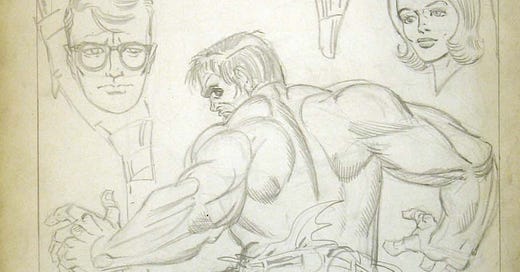



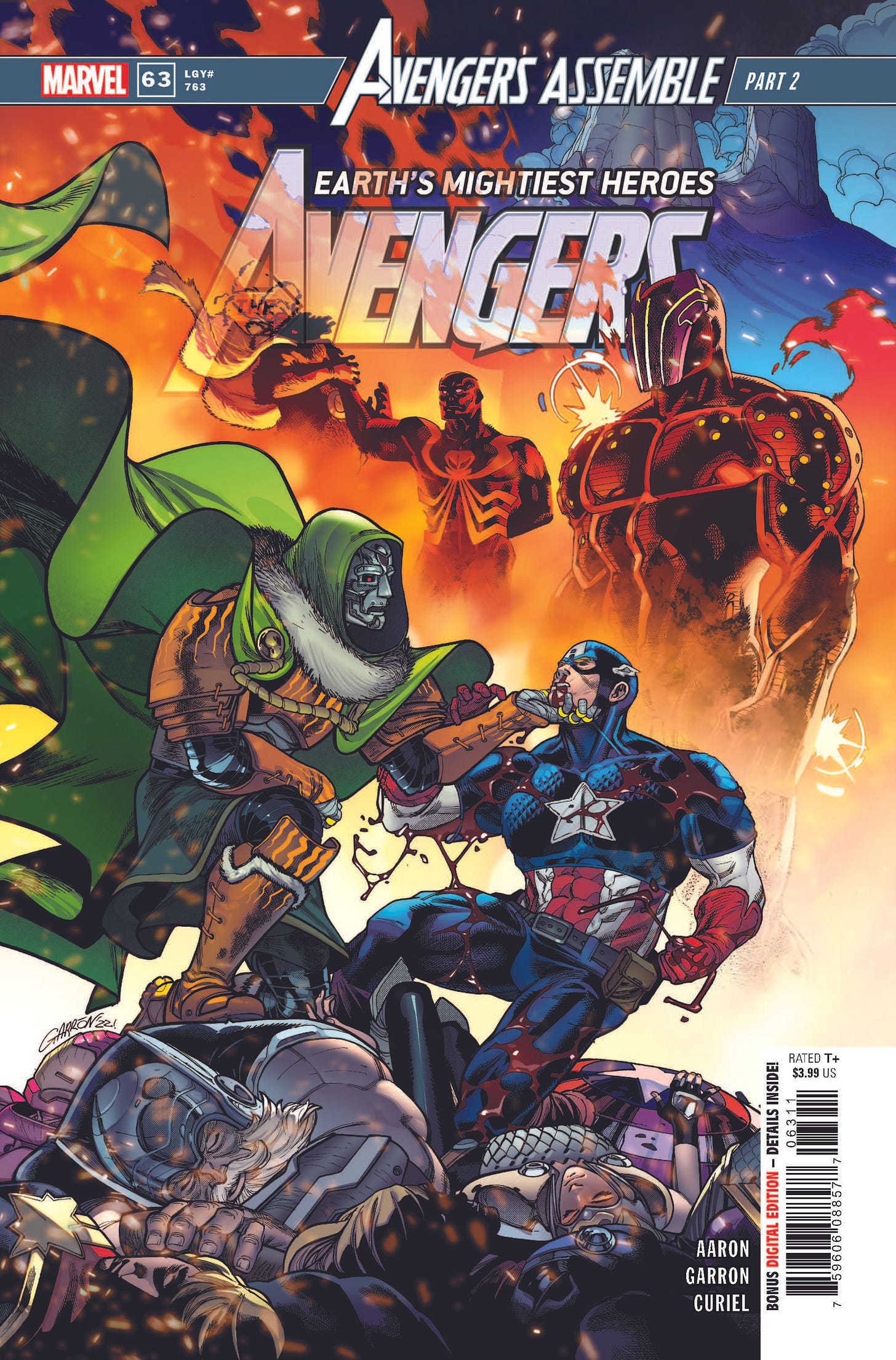
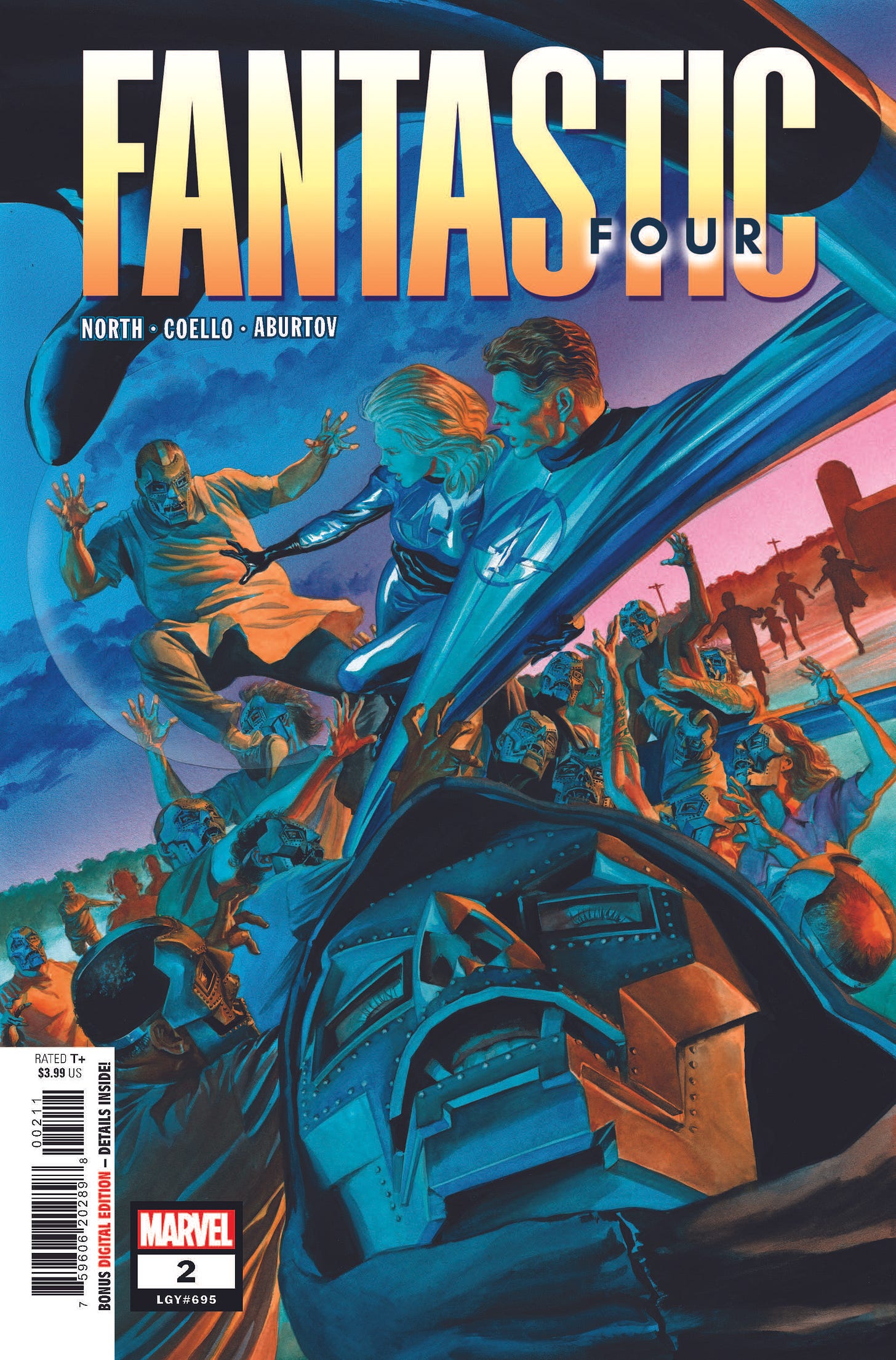
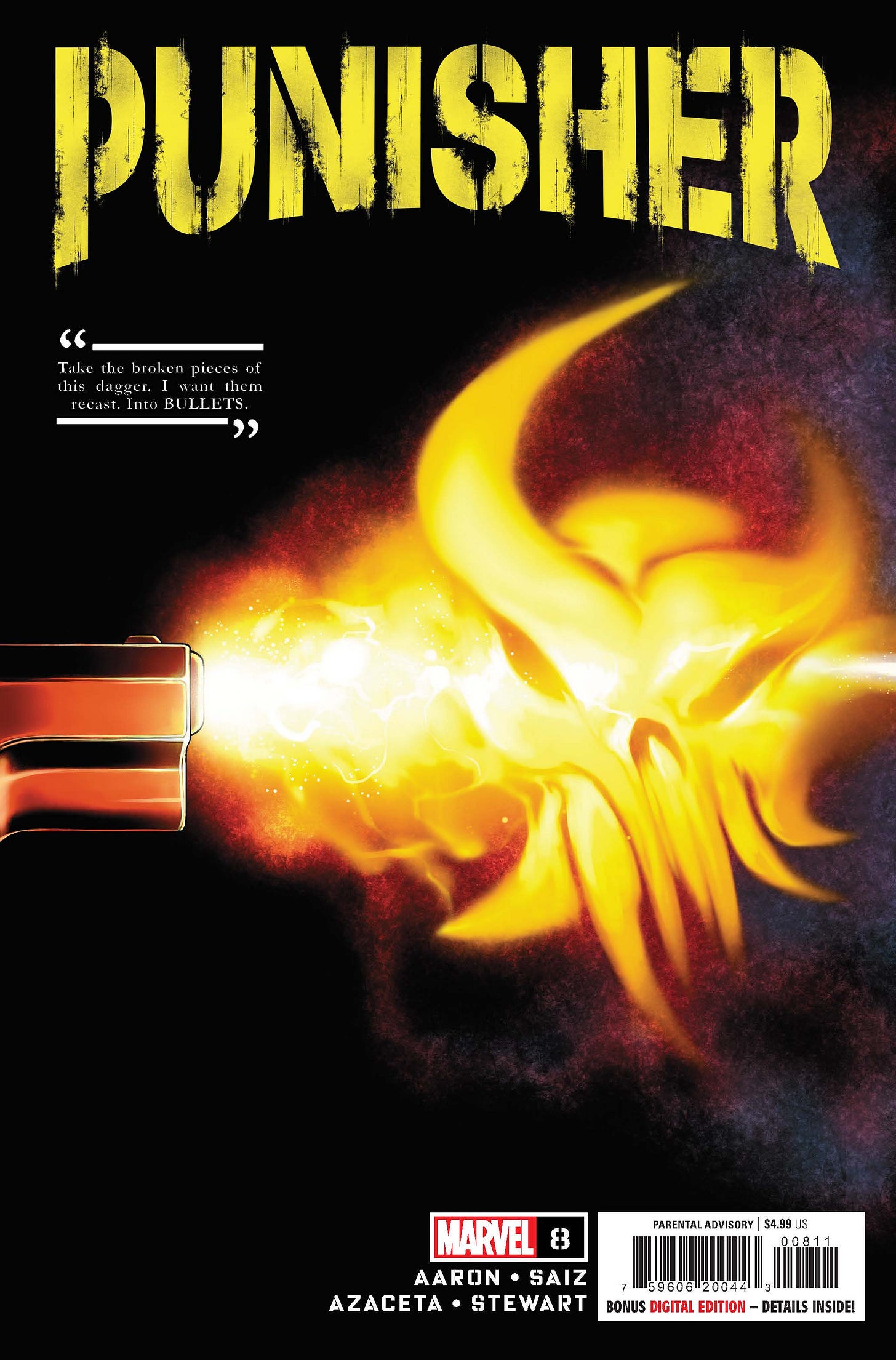
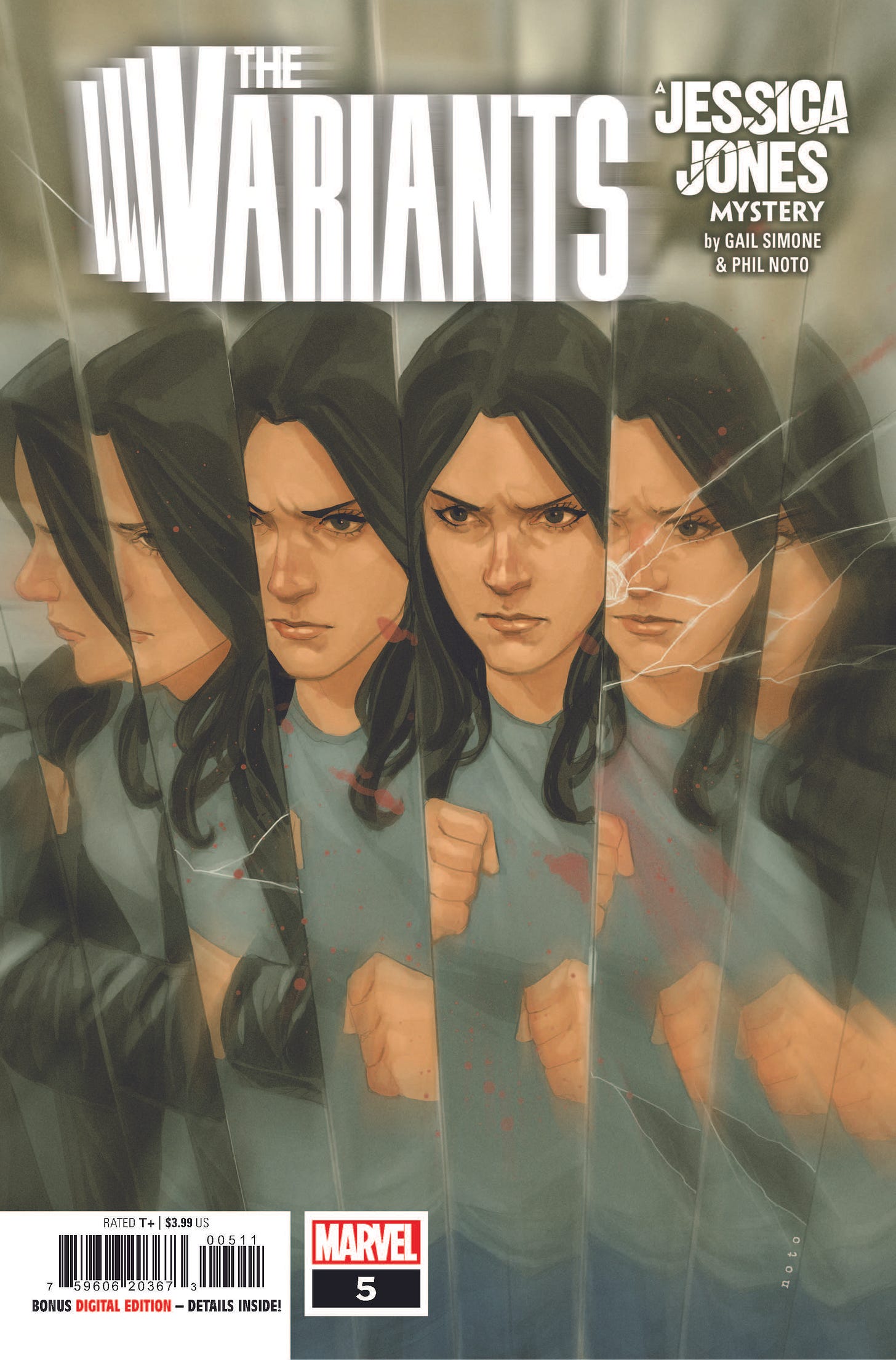
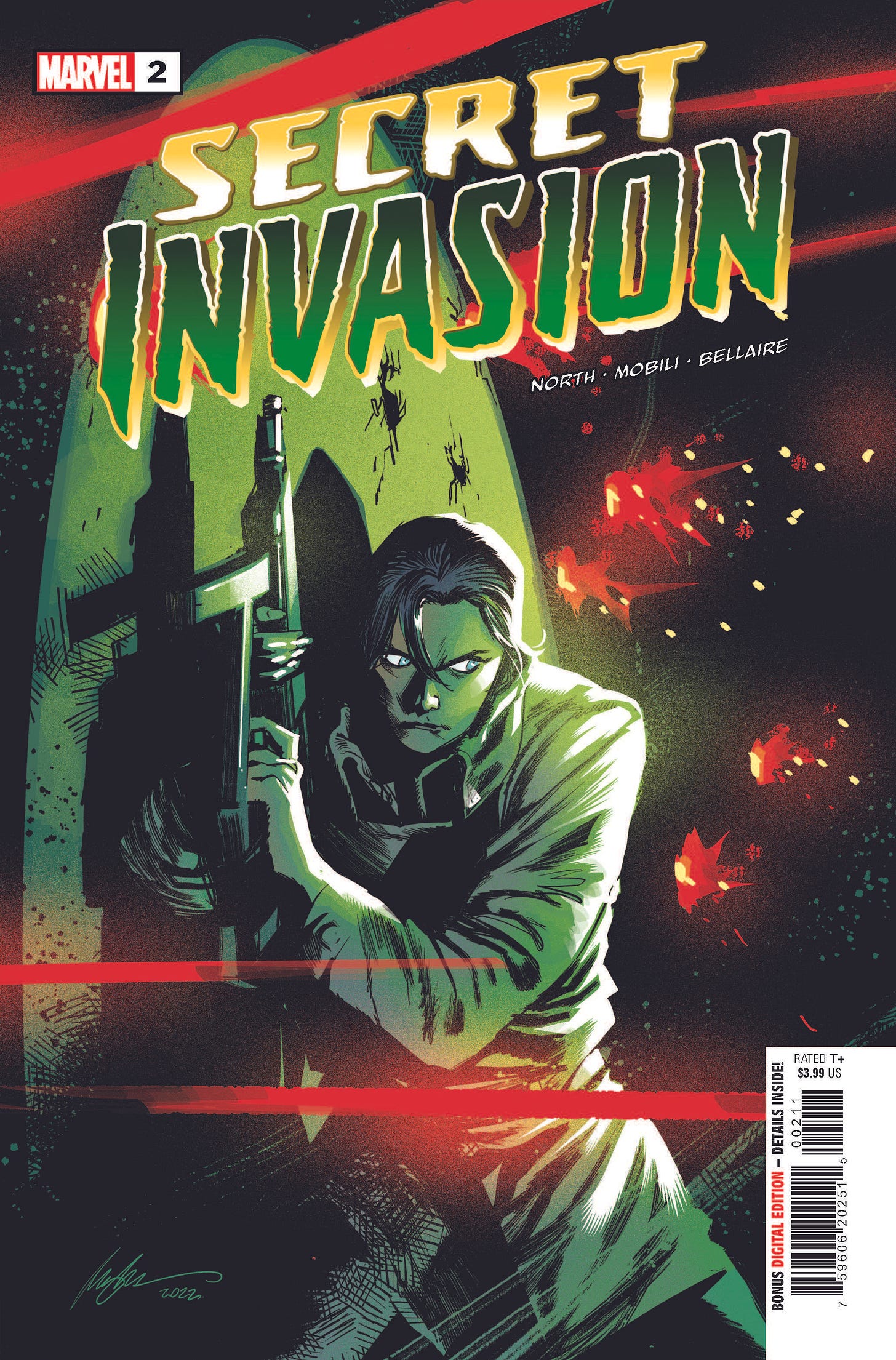
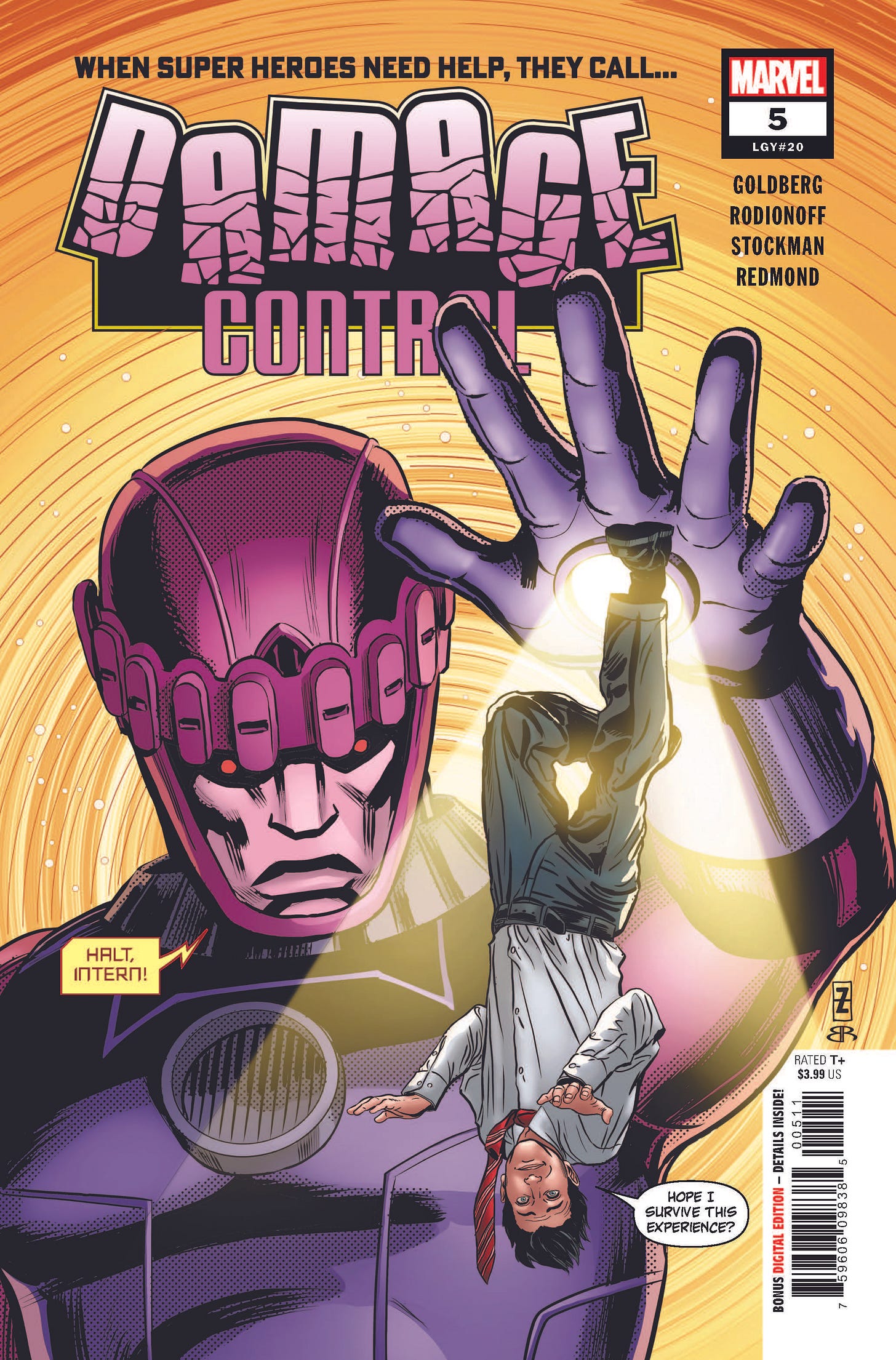

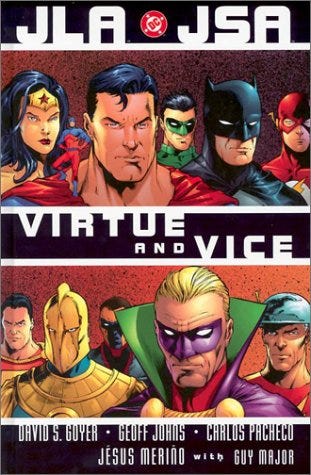
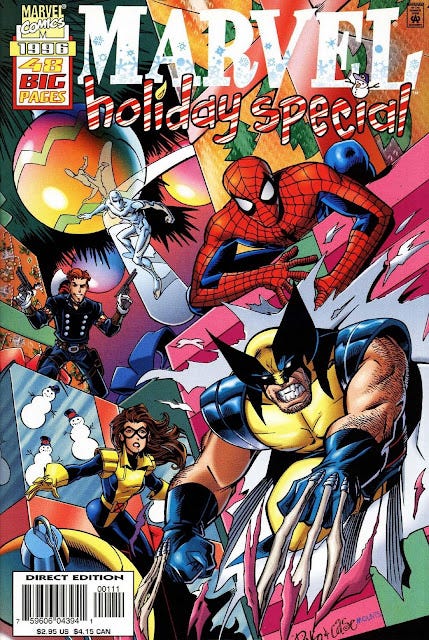
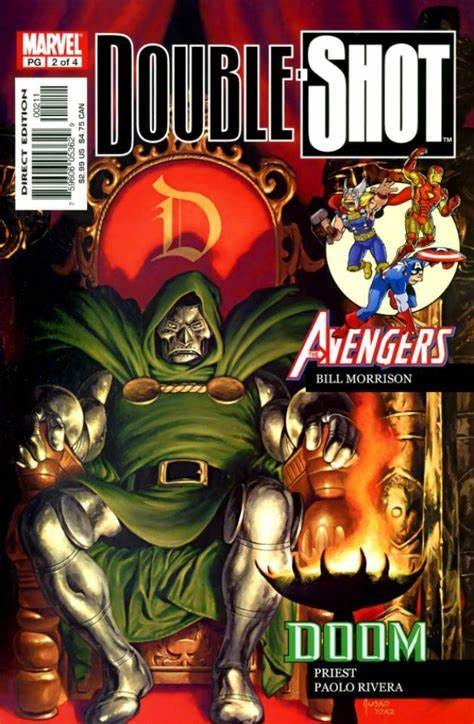
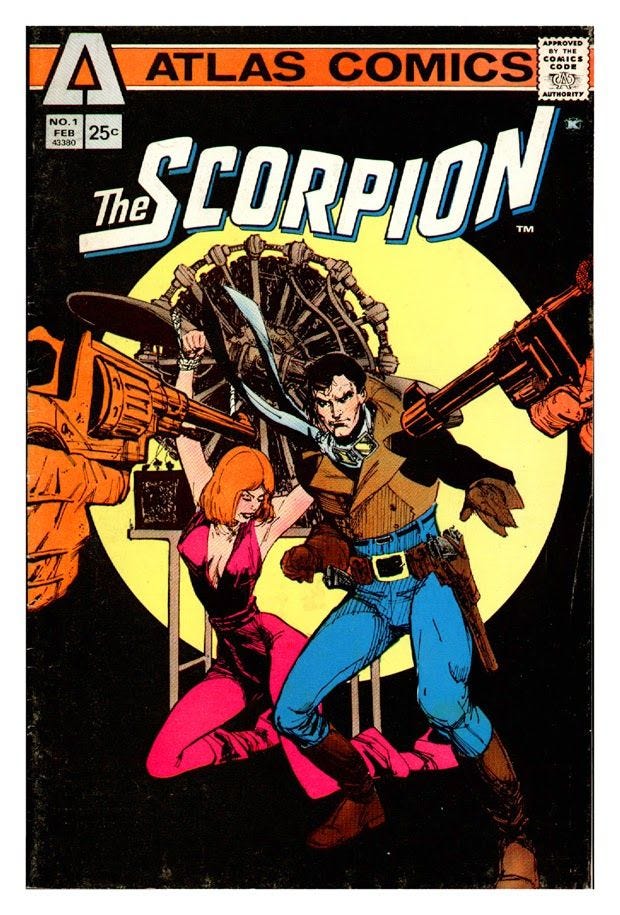
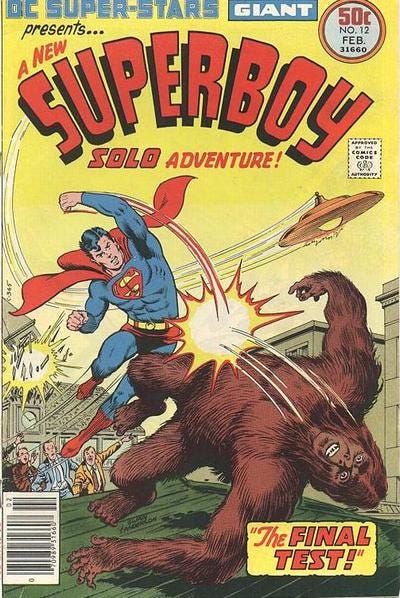
QUESTION: How much of your job— editing comics— is instinctive, and how much is a learned skill? I've been thinking about this a lot lately for what I do— writing and inking— and am curious how it applies to what you do, too.
For me, in very broad stokes, everything start Instinctively— an idea or image or scene or line of dialogue sets off my "spider-sense"/excites the "fanboy" in me— and then as I start refining things, more and more Skill takes over as I connect dots and fill in gaps. But even then I will often be stopped cold by something that simply "doesn't feel right." I have a few strategies to get me past this (the most useful is "do the exact opposite": have a character be angry instead of happy, leave instead of stay, or have a different character do the action; it's surprising how often this approach works) but I usually spend far too much time trying to figure out what's "wrong" and how to fix it. In this regard I deeply admire Kurt Busiek's ability to instantly analyze story problems and just as quickly see a workable— and usually excellent— solution.
Even inking— there are panels or even single figures that I look at and INSTANTLY know how they should look in ink. These are cases where I don't feel I'm inking as much as I'm simply revealing what's already there (to my eye, at least). But there are other times I simply have to rely on what I've learned for how to ink well— line weights, light sources, textures, depth, etc.
I have very fond memories of that RAWHIDE KID Christmas story, Tom! I can't remember who recommended doing something with the Kid— I assume you— but I know I'm the one who dragged in the idea of using a classic Marvel Monster type of antagonist. There's something niggling in the back of my mind that the addition of Tony Stark's ancestor came pretty late in the game— but it was also the "AHA!" moment when the whole story came together. And Patrick/Patch's art kicked my silly story up a noticeable number of notches. A great book that I was (and still am) proud to have been a small part of!